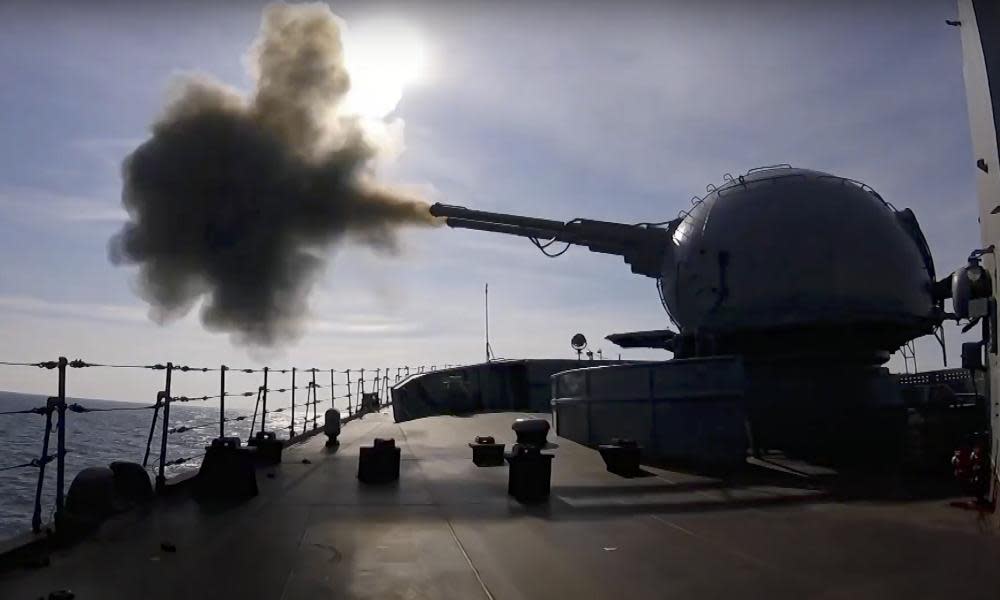Last piece of Putin’s puzzle slots into place: preparing Russians for war

- Oops!Something went wrong.Please try again later.
The omens of impending war we were warned about now seem to be lining up like the horsemen of the apocalypse.
The field hospitals have been set near the border, blood banks have reportedly been brought in. On the information war front, a dossier of alleged Ukraine war crimes circulated at the UN security council, and a video popped up purporting to show an attempted Ukrainian attack on chlorine tanks in the Donbas.
Related: Ukraine crisis: Blinken and Lavrov agree to meeting as tensions reach ‘moment of peril’
Now the rebel leaders in the Donetsk and Luhansk oblasts have ordered the evacuation of women and children to Russia, claiming – with no evidence whatsoever – that a Ukrainian attack is imminent. Right on cue, a car bomb went off in Donetsk, injuring no one, but providing a fireball for the cameras.
All of this is more or less what US and UK briefers have told journalists to expect in the run-up to a Russian invasion. The one piece that had been missing from Vladimir Putin’s relentless build-up was an effort to prepare the Russian population for the prospect of a major war. That piece seems to be slotting into place.
Just as Russian armour and helicopters are edging up the border, Russian messaging is also advancing to the brink. War is becoming more probable by the hour, but it still does not necessarily mean that Putin has made his final decision.
Other explanations are still possible, and events unfolding today may be messier than a single Kremlin-orchestrated master plan.
If the chlorine video was the “false flag” pretext for war, it is a very crude and low-budget version of what US and British briefers had predicted, which had involved actors, borrowed corpses and high production values.
In a similar vein, the dossier presented to the security council on Thursday was extremely thin and did not claim anything other than civilians have been killed in shelling on the rebel side of the lines in the Donbas since 2014. That was already known, it mirrors civilian casualties on the other side, and falls a very long way short of genocide.
The most alarming development of the day is the evacuation from Luhansk and Donetsk, creating a sudden refugee crisis in neighbouring Rostov in Russia.
The Kremlin spokesman, Dmitry Peskov, and the Rostov governor claim to have been caught unawares by this move. They could quite possibly be lying, to add to the pretence of spontaneity. But it is not impossible that the rebel Donbas leaders are seizing an opportunity, using the crisis Putin has created to force his hand, with the aim of leaving him no choice but to recognise the republics as the Russian Duma is demanding.
“I know it’s easy to read into this as part of Putin’s grand plot,” Gennady Rudkevich, a Russia expert at Georgia College, argued. “But there are a lot of parties that are affected by what happens next (positively and negatively). Some might be following the Kremlin’s orders. But others might be trying to deny Putin any option but invasion.”
Putin’s carefully curated mystique is designed to keep everyone else guessing while he keeps his options open. Ukraine and its backers have not made the concessions he has demanded, so perhaps Putin believes that they just haven’t been scared enough, and is laying on what we have been primed to expect in the hours before a war. The finger has tightened around the trigger, but there remains a small, ever diminishing, chance it might not be pulled.

